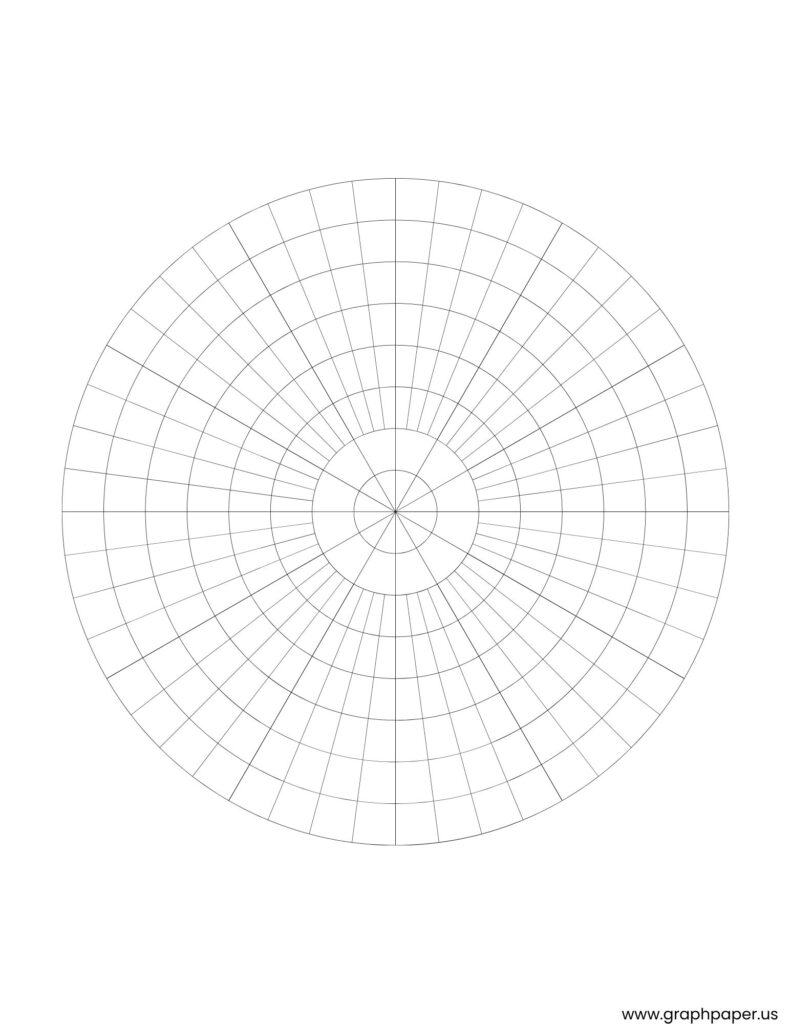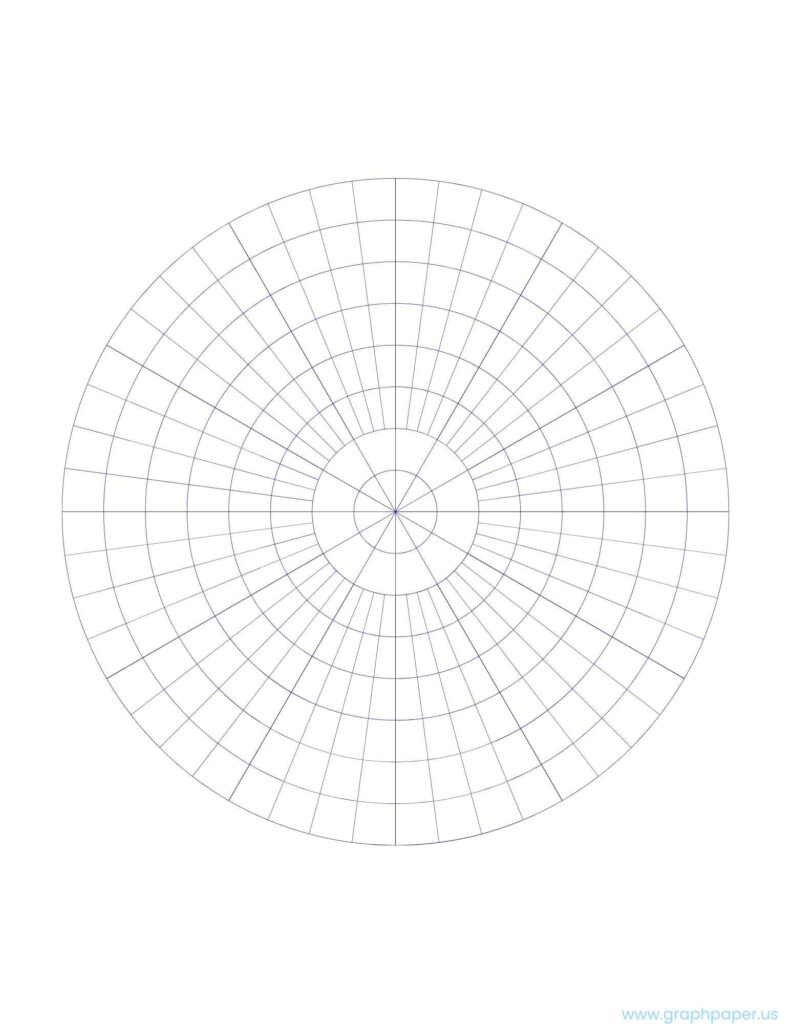A polar graph paper provides a unique coordinate system ideal for plotting functions expressed in terms of radius and angle. Polar paper differs from Cartesian grids with perpendicular x and y axes; it uses concentric circles radiating from a central point (the pole) and radial lines extending outward at constant angular intervals.
Such a specialized grid facilitates visualization of circular or rotational patterns and is thus of special worth in physics, engineering, and mathematics to describe phenomena like wave propagation, antenna radiation pattern, or complex numbers. Its very structure emphasizes symmetries and periodicities so often ignored on a regular rectangular graph and provides an even more intuitive and uncluttered description for functions with inherent radial or angular dependencies.
Download Polar Coordinate Graph Paper
Get access to printable polar graph paper in pdf format which is available in both black and blue grid, which is good for math students, teachers and engineers who need radial and angular plotting.
Polar Plot Graph Paper Black Color
Black line graph paper provides an excellent example of a grid for graphing radial and angular functions, ideal for scientific, engineering, and mathematical graphs. Its high contrast black lines provide excellent readability for a broad range of applications, from textbooks to technical drawings.

Polar Graphing Paper Blue Color
Blue line polar graph paper provides an unobtrusive grid on which to plot radial and angular functions, convenient for science, engineering, and mathematics. Its “drop-out” blue lines are great for draft and scratch work, since they scan less noticeably.

Features of Polar Graph
Polar graph helps plot polar coordinate points and functions by defining each point through its radial distance from the pole and its angle from a reference direction. It has a point in the center (origin) as the reference point, and concentric circles around it to define radial distances (r). Radial lines, at constant angles (θ) in degrees or radians, define direction and help in plotting data with circular or angular features.
Furthermore, it is useful for graphing polar equations, graphing complex numbers, and analyzing wave patterns, antenna signals, and control systems. It is also used in robotics, astronomy, GPS, biomedical imaging, and sonar/radar to graph radial and angular data. Polar graph paper is required in the study of circular or periodic patterns, offering greater insight than Cartesian grids in the majority of scientific and engineering fields.
![Free Printable Graph Paper [Online, PDF, Editable]](https://graphpaper.us/wordpress/wp-content/uploads/2025/07/graph-paper-logo-231x75.png)